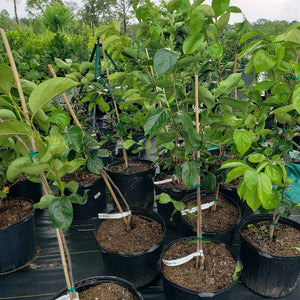PERS
Non-Astringent vs. Astringent Persimmons
Astringent Persimmons
-
Taste/Texture when unripe: Extremely astringent (mouth-puckering), owing to high soluble tannins.
-
When edible: Must be fully soft and jelly-like ripe before they taste sweet.
-
Examples: American persimmon (Diospyros virginiana), Asian ‘Hachiya’.
-
Fruit drop timing: Often later in the fall, sometimes into winter, depending on variety or wild genetics.
Non-Astringent Persimmons
-
Taste/Texture when unripe: Can be eaten firm, even when still crisp—low tannins.
-
When edible: Sweet while still firm.
-
Examples: Asian types like Fuyu, Jiro, Izu.
-
Fruit drop timing: Typically early to mid-fall.
Which Is Best for a Wildlife Food Plot?
Best Choice: Astringent Persimmons (especially American persimmon)
Why:
-
Wildlife preference: Deer, raccoons, foxes, and many other species love the fruit once it softens and drops.
-
Late-season nutrition: Many astringent varieties hold fruit later into fall or early winter, creating a natural food source during colder periods.
-
Hardiness: American persimmons are far more cold-hardy and adaptable to wild or neglected soils.
-
Reliable fruit drop: Astringent trees tend to drop fruit naturally when fully ripe—perfect for deer.
When to consider non-astringent varieties:
-
Only if you are in a mild climate (zones 7–9) and want earlier fruit availability.
-
But non-astringent types often hold fruit on the tree instead of dropping, making them less ideal for deer unless shaken or allowed to fall from over-ripeness.
Recommendation
For wildlife food plots, especially for deer:
→ Plant American persimmons or astringent Asian hybrids selected for late fruit drop.
IMMON TREES American and Asian Persimmons



















































